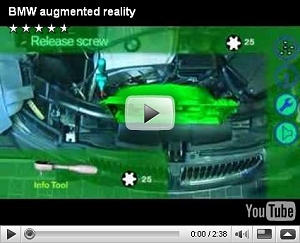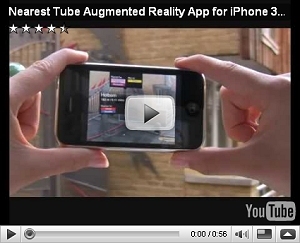Whitespace: The multilayered world of augmented realityIssue 55: November 2009 As smartphones continue their phenomenal rise in popularity a related game-changing development is on the horizon with augmented reality (AR) evolving from science fiction movies to use in a business sector near you. Put simply, AR can be defined as the visual layering of data, graphics and icons over real world images as seen through a webcam or smartphone camera. An example of AR in action is the Wikitude World Browser, an application for Android and iPhone devices that overlays Wikipedia sourced information in front of smartphone users. Say you're wandering the streets of Paris. By simply holding your smartphone in front of you Wikitude would 'layer' links to information about buildings, street names and other points of interest in front of the real world image. The Netherlands developed Layar is another AR program that's gaining notoriety. With information gathered from over 200 sources this program reveals demographics, building histories and block-by-block news to users. But AR is more than just a toy for travellers or trivia buffs. Futurists claim smartphone-based AR, which is predicted to grow into a US$732 million industry over the next four years, offers a wealth of business applications. Seeing is believing Marketers have been quick to get excited about AR. A number of online ads are already in circulation that take advantage of the software by turning 2D images into animated brand stories. In the US, Coke has invested in AR to help bring its product packaging to life in a 3D cross promotion with the new sci-fi blockbuster Avatar. Closer to home, QUT recently used a personalised AR direct mail piece to convince university applicants to switch their preferences. Beyond marketing a number of more practical applications are emerging for AR. The US Postal Service has developed an AR facilitated virtual box selection service to help customers select the right packaging for items they wish to post. BMW is encouraging mechanics to don goggles with built-in monitors before using AR to learn how to repair its automobiles. And software developer Acrossair has released a series of iPhone applications that can help users find train stations in selected cities. Just add social media The biggest potential impact of AR may well occur when it is linked with social media. Pundits suggest programs that reveal the opinions of social media users in front of real-world views will help AR reach its tipping point. For example, imagine you’re holding a smartphone in front of a busy strip of restaurants. Your device would reveal the real-time ratings of people who have dined in those establishments and published their views via increasingly influential services like Yelp. This is only the beginning. Real-time reviews of services providers from hairdressers to night spots, vet clinics to hotels are all possibilities. Where to from now? Augmented reality is still in its infancy but moving quickly. Currently many forms of AR are gimmicks as opposed to highly useful services, yet the potential of AR suggests the emergence of key developments that many internet researchers have been predicting for years: a world wide web that's more visual than text based, and a communal resource that's with us wherever we go. Whitespace is published monthly by the Australian Institute of Management - Qld & NT. Sign up to have a copy sent direct to your mailbox. |
|




